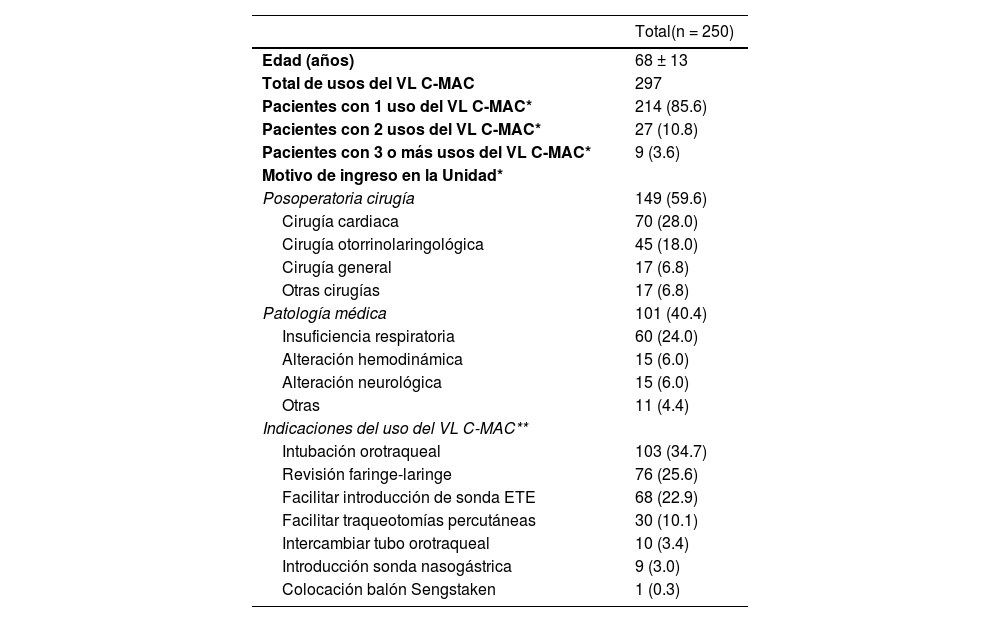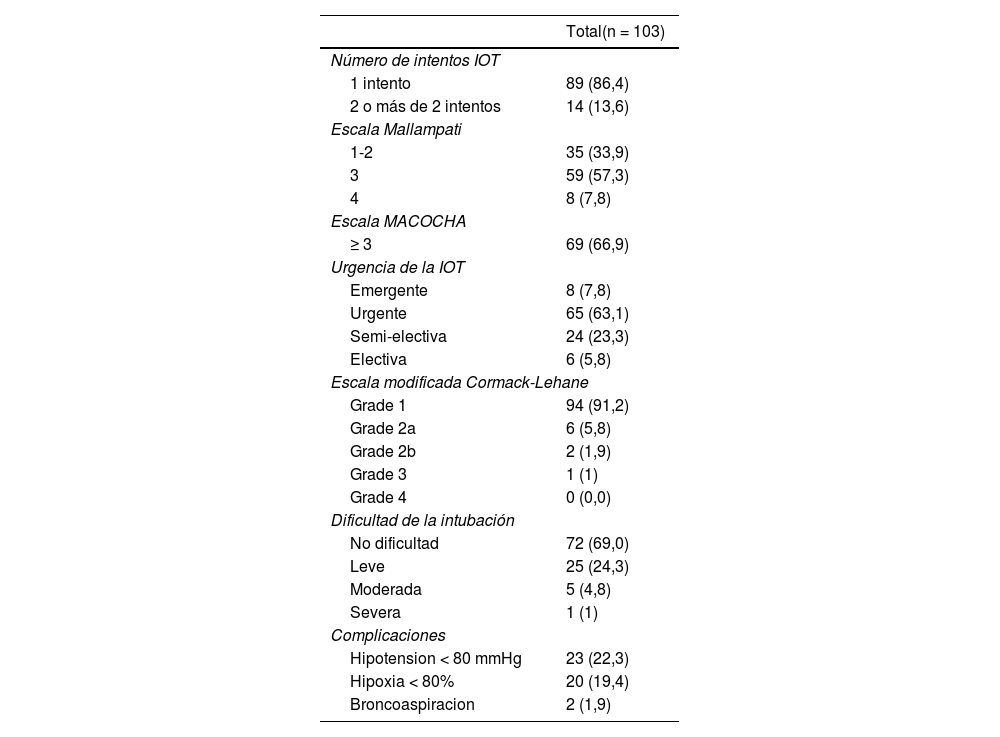Describir los principales usos del videolaringoscopio (VL) C-MAC en una Unidad de Cuidados Intensivos (UCI) durante un periodo de 29 meses.
Material y métodosEstudio prospectivo, observacional durante un periodo de 29 meses. Se incluyeron todos los pacientes ingresados en nuestra UCI donde fue utilizado el VL C-MAC. Se registraron las indicaciones, eficacia y complicaciones.
ResultadosEl VL C-MAC se ha utilizado 297 veces en 250 pacientes. La edad media de los pacientes fue 68 ± 13 años. El uso más frecuente del VL C-MAC fue para intubación orotraqueal (IOT), en 103 (34,7%) casos. El 86,4% de los pacientes fueron intubados al primer intento. La IOT con VL C-MAC supuso 60,6% (103/170) de todas las IOT realizadas durante el periodo a estudio. El VL C-MAC fue utilizado en 76 (25,6%) casos para revisión de la zona faringe-laringe, y en 68 (22,9%) casos para facilitar introducción de la sonda de ecocardiografía transesofágica (ETE). Otros usos fueron: facilitar la realización de traqueostomía percutánea (10,1%), colocación de sonda nasogástrica (3%), intercambio de tubo orotraqueal (3,4%) y colocación de balón de Sengstaken (0,3%).
ConclusionesLa IOT, la revisión de la zona faringe-laringe y la introducción de la sonda de ETE fueron los usos más frecuentes del VL C-MAC en nuestra UCI. El uso del VL C-MAC en una UCI es más amplio que la IOT, y puede facilitar el manejo del paciente crítico.
To describe the main uses of the C-MAC video laryngoscope (VL) in an Intensive Care Unit (ICU) during a period of 29 months.
Material and methodsProspective, observational study during a period of 29 months. All patients admitted to our ICU where the VL C-MAC was used were included. Indications, efficacy, and complications were recorded.
ResultsThe VL C-MAC has been used 297 times in 250 patients. The mean age of the patients was 68 ± 13 years. The most frequent use of the VL C-MAC was orotracheal intubation (IOT), in 103 (34.7%) cases. 86.4% of the patients were intubated at the first attempt. Intubation with the VL C-MAC accounted for 60.6% (103/170) of all IOTs performed during the study period. The VL C-MAC was used in 76 (25.6%) cases to review the pharynx-larynx area, and in 68 (22.9%) cases to facilitate the introduction of the transesophageal echocardiography (TEE) probe. Other uses were facilitating percutaneous tracheostomy placement (10.1%), nasogastric tube placement (3%), orotracheal tube exchange (3.4%) and Sengstaken balloon placement (0.3%).
ConclusionsThe IOT, the review of the pharynx-larynx area and the introduction of the TEE probe were the most frequent uses of the VL C-MAC in our ICU. The use of VL C-MAC in an ICU is broader than tracheal intubation and can facilitate the management of critical patients.
Article
Socios de la Asociación de Medicina Crítica y Cuidado Intensivo
Para acceder a la revista
Es necesario que lo haga desde la zona privada de la web de la AMCI, clique aquí













